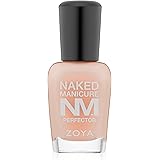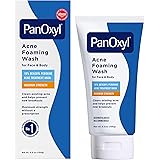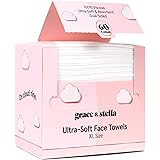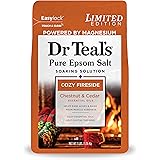Have you ever found yourself in front of the mirror, hair stubbornly refusing to cooperate, despite countless product experiments and trendy “hacks” gleaned from social media? It is a frustratingly common experience, leading many to believe that the secret to luscious locks lies solely in the strands themselves. Yet, as brilliantly explored in the video above, the true foundation of strong, vibrant, and genuinely healthy hair is often overlooked: the scalp. This comprehensive guide delves deeper into the intricate world of scalp health, emphasizing why a balanced and nourished scalp is the non-negotiable prerequisite for achieving your best hair days.
For centuries, the focus of hair care was predominantly placed on the visible strands, treating issues like split ends or dullness as isolated problems. However, a shift in understanding has brought to light that the scalp, often considered merely the canvas for hair, is in fact the dynamic ecosystem where hair health truly begins. Every single strand of hair emerges from an individual follicle, embedded within your scalp. These follicles are not just passive anchors; they are active biological units responsible for producing sebum, the natural oil that moisturizes and protects both the scalp and the hair. Maintaining the optimal function and cleanliness of these follicles is absolutely crucial for healthy hair growth and overall vitality.
Unlocking the Secret to Healthy Hair: It All Starts with Your Scalp
The health of our scalp is intrinsically linked to the condition of our hair. Consider the analogy of a garden: if the soil is barren, clogged, or lacking nutrients, the plants growing in it will inevitably suffer. Similarly, when hair follicles become obstructed by excess sebum, dead skin cells, environmental debris, or even microbial imbalances, the quality of hair growth is significantly compromised. Such blockages can lead to weakened strands, slower growth, or, in severe cases, the permanent cessation of hair production within that follicle. Scientific insights confirm that the scalp is surprisingly delicate and undergoes cellular renewal at a rate approximately twice as fast as the rest of our body’s skin, highlighting its dynamic nature and constant need for proper care.
One of the most critical factors governing scalp health is its pH balance. A healthy scalp is typically mildly acidic, maintaining a pH level between 4.5 and 5.5. This slightly acidic environment acts as a protective barrier, effectively deterring the proliferation of harmful bacteria and fungi, while also safeguarding the scalp’s natural moisture. When this delicate pH balance is disrupted—perhaps due to harsh products or environmental stressors—the scalp can become either excessively oily or overly dry. An overly alkaline scalp, for instance, can strip away natural protective oils, leaving the scalp vulnerable to irritation and dryness, while an overly acidic environment might contribute to excessive oiliness and related issues. Maintaining this equilibrium is paramount for ensuring optimal function and preventing common scalp conditions that impact hair health.
Decoding Your Scalp: Identifying Your Unique Type for Tailored Care
Just as facial skin varies from oily to dry, so too does the scalp, each type presenting its own unique set of challenges and requiring a personalized approach to care. Understanding your specific scalp type is the foundational step in developing an effective and sustainable hair care routine that truly nurtures a healthy scalp and promotes beautiful hair.
-
The Oily Scalp Type
Individuals with an oily scalp typically possess highly active sebaceous glands that produce an abundance of sebum. This often results in hair looking greasy and clumpy within 48 hours of washing, particularly noticeable at the roots where the first two to three centimeters of hair appear visibly oily. Beyond the aesthetic concern, an oily scalp can foster the growth of oleophilic Malassezia bacteria, which thrive in sebum-rich environments and are frequently associated with certain types of dandruff. Managing this type often involves gentle yet effective cleansing to regulate oil production without over-stripping, a common mistake that can paradoxically lead to increased sebum secretion as the scalp tries to compensate.
-
The Dry Scalp Type
In stark contrast, a dry scalp is characterized by underactive sebaceous glands that fail to produce sufficient natural oils, leading to a higher, more alkaline pH. This imbalance results in persistent dryness, itchiness, and the visible presence of powdery, fine dandruff flakes, which are essentially shed dead skin cells. For those with a dry scalp, hair may take five days or more without washing before any significant oil buildup becomes apparent. The primary goal for this scalp type is to replenish moisture, soothe irritation, and restore the scalp’s natural barrier function through hydrating ingredients and a gentle washing frequency that respects its delicate nature.
-
The Combination Scalp Type
This scalp type, perhaps the most challenging to manage, exhibits characteristics of both oily and dry conditions across different areas of the head. Typically, the crown may be prone to oiliness, while the sides and back experience dryness. This uneven distribution of sebum production often results in an oily scalp paired with dry, frizzy hair strands, as the excess sebum on the scalp may not effectively coat and protect the hair shaft. A balanced approach is crucial, involving targeted treatments that address specific concerns in different zones, rather than a one-size-fits-all solution that could exacerbate issues in either direction.
-
The Sensitive Scalp Type
Individuals with a sensitive scalp often experience frequent itching, irritation, and reactivity, which can be triggered by seasonal changes, environmental factors, or even common hair care ingredients. This type is highly prone to redness, burning sensations, small bumps (folliculitis), and general discomfort. New hair growth from a sensitive scalp may appear thin and brittle, indicating underlying inflammation or barrier dysfunction. Careful ingredient selection, prioritizing hypoallergenic and soothing formulations, is paramount to minimize potential irritants and restore comfort and balance to the scalp.
The Science of Clean: Choosing the Right Shampoo for Your Scalp and Hair
The shampoo aisle can be overwhelming, filled with promises of volume, shine, and repair. Yet, the most critical decision often revolves around the ingredients designed to cleanse your scalp. Surfactants, the chemical compounds responsible for lifting oil and dirt, constitute approximately 90% of shampoo formulations. Historically, sulfates like Sodium Lauryl Sulfate (SLS) and Sodium Laureth Sulfate (SLES) have been the backbone of shampoo efficacy due to their powerful cleansing properties and ability to create a rich lather.
While some public discourse suggests sulfates are inherently “bad,” their impact is more nuanced. For individuals with an oily scalp and hair, shampoos containing both SLES and SLS can be highly effective in thoroughly removing excess sebum and buildup, preventing clogged follicles. Conversely, for those with a dry or sensitive scalp, formulations with only SLES or entirely sulfate-free options are often recommended. Sulfate-free shampoos, utilizing milder cleansing agents, are designed to be gentler, preserving more of the scalp’s natural oils and reducing the potential for irritation or dryness. However, it is important to note that very mild or sulfate-free formulas might not provide sufficient cleansing for all hair types, potentially leading to product residue accumulation that can paradoxically harm follicles over time. The key is finding a balance that cleanses effectively without stripping the scalp of its essential moisture barrier, aligning with your individual scalp’s needs and porosity levels.
Mastering the Art of Scalp Cleansing: Proper Washing Techniques
Beyond selecting the right products, the methodology of your washing routine plays a pivotal role in maintaining a healthy scalp and hair. Effective cleansing is not just about lathering up; it involves a series of intentional steps designed to optimize scalp health and prepare hair for subsequent conditioning. Firstly, ensure your scalp and hair are thoroughly saturated with water. This initial rinse can remarkably dislodge up to 80% of surface oils, dust, and product residue, opening the hair cuticle and priming it for a deeper cleanse. Patience during this step is often overlooked but profoundly impactful.
When applying shampoo, avoid direct application to your scalp. Instead, it is recommended that the product first be emulsified in your hands with a small amount of water to create a gentle foam. This practice ensures an even distribution across the scalp, preventing excessive concentration in one area and minimizing the risk of product buildup. Furthermore, for conditioners and hair masks, direct application to the scalp is generally discouraged due to their typically heavier, moisturizing formulations, which can lead to clogged follicles if not meticulously rinsed. Lukewarm water, ideally no warmer than 40 degrees Celsius, is advisable for washing. Excessively hot water can not only damage the hair cuticle, leading to dryness and brittleness, but it can also stimulate the sebaceous glands to overproduce oil in an attempt to compensate for moisture loss.
The act of washing should involve a gentle massage of the scalp using your fingertips, not nails, in small, circular motions. Beginning at the temples and working towards the crown, then from the base of the ears upwards, and not forgetting the nape of the neck, a consistent three to five-minute massage stimulates blood flow. This improved circulation delivers essential nutrients to hair follicles, promotes healthy cell turnover, and aids in the gentle exfoliation of dead skin cells, contributing significantly to optimal hair growth. After thoroughly cleansing the scalp, the remaining foam is gently worked down the hair shaft to cleanse the strands. A meticulous rinse, ensuring no shampoo or residue remains, is crucial for preventing buildup that could weigh down hair or irritate the scalp. Multiple rinses, carefully lifting and ruffling strands, confirm a completely clean and refreshed result.
Tailored Care: Specific Tips for Each Scalp Type
While the general washing guidelines apply universally, integrating specific care practices tailored to your scalp type can dramatically enhance your journey toward healthy hair.
-
For Oily Scalps:
Daily or every-other-day washing with a gentle shampoo is often beneficial for those with an oily scalp. The prevailing myth of “training your hair” by infrequent washing is frequently counterproductive for oily scalps, as it can lead to increased buildup and potentially contribute to hair loss. Evidence suggests that the amount of hair loss over two days without washing can sometimes exceed that of daily washing for this scalp type. It is crucial to select lightweight conditioners that do not weigh down hair or contribute to greasiness. For dandruff associated with oily scalps (often linked to Malassezia yeast), zinc-based shampoos can be particularly effective when used with the same frequency as regular washing, helping to regulate the scalp microbiome.
-
For Dry Scalps:
The cornerstone of care for a dry scalp is hydration and minimizing moisture stripping. Opt for mildly acidic shampoos enriched with moisturizing and barrier-supporting ingredients such as hyaluronic acid, ceramides, or gluco-peptides. These components work to gently cleanse while preserving the scalp’s natural sebum and reducing irritation. While deep-cleansing scrubs can be beneficial for exfoliation, they are best limited to once a week to avoid over-stripping. Regular application of targeted scalp oils or hydrating serums can provide much-needed moisture and relief for particularly dry or itchy areas, nurturing a more balanced environment.
-
For Sensitive Scalps:
Ingredient scrutiny is paramount for sensitive scalps. Many common hair products contain preservatives, fragrances, and dyes that can trigger allergic reactions or irritation. Prioritizing shampoos specifically formulated for sensitive skin, often labeled as hypoallergenic or fragrance-free, significantly reduces the risk of adverse reactions. These formulations are designed to be extremely gentle, supporting the scalp’s delicate barrier function. Additionally, discovering a consistent washing routine that minimizes environmental triggers and respects the scalp’s reactivity is essential for maintaining comfort and long-term health.
-
For Combination Scalps:
A balanced approach is key for the combination scalp. This involves using a gentle, balancing shampoo that cleanses without over-drying, adjusted in frequency to address the scalp’s fluctuating needs. Targeted spot treatments are highly effective: a lightweight, balancing scalp treatment can be applied to oily areas, while a moisturizing serum or oil can hydrate drier patches. This customized strategy allows for the unique needs of different scalp regions to be met without compromising the overall scalp environment.
Beyond Basic Care: Tackling Hair Loss and Encouraging Regrowth
Once fundamental scalp care practices are established, attention can shift to more specific concerns like hair loss and shedding. The journey towards encouraging hair regrowth is often conceptualized as a “hair regrowth pyramid,” built upon three critical layers: reducing hair loss, regulating the scalp environment, and actively stimulating new growth.
The foundational layer emphasizes the reduction of hair loss. As previously discussed, congested follicles are a primary contributor to hair fall, underscoring the importance of a clean scalp achieved with appropriate products tailored to your scalp type. Beyond product choice, certain habits can inadvertently exacerbate hair loss. For instance, hairstyles that involve constant pulling or tugging, such as tight ponytails, braids, or excessively tight hijabs, can lead to traction alopecia, a form of hair loss characterized by a receding hairline. Opting for looser styles significantly minimizes stress on hair follicles, thereby protecting them from damage and premature shedding.
The second layer focuses on regulating the scalp environment. This involves going beyond basic cleanliness to address specific issues that hinder optimal scalp health. For an oily scalp, a weekly deep-cleansing scalp scrub can effectively remove accumulated gunk, dead skin cells, and product residue, revitalizing the follicles. Conversely, a dry scalp greatly benefits from a weekly nourishing scalp mask, which helps to replenish moisture, soothe irritation, and counteract the drying effects of hard water or harsh products. Targeted scalp oils or serums can also be strategically applied to address specific problem areas, providing concentrated nourishment and balancing properties.
Finally, the apex of the pyramid involves stimulating hair growth. Once a healthy foundation is established, various methods can be explored to encourage new hair. Hair serums and tonics, often formulated with active ingredients such as caffeine, biotin, peptides, collagen, keratin, or various vitamins, are designed to strengthen hair roots and prolong the hair growth cycle. The selection of such products should always consider individual hair and scalp types, along with any existing skin sensitivities. Alternatively, natural ingredients like castor oil, rosemary oil, or jojoba oil, along with herbal and root extracts, have garnered attention for their potential to stimulate growth. Notably, some studies indicate that rosemary oil may offer efficacy comparable to medicated topical products in certain cases of hair regrowth. Consistency in application is a recurrent theme across all these options, as sustained use is essential for observing tangible results.
For individuals seeking more potent interventions, over-the-counter medicated topical treatments like minoxidil (commonly known as Rogaine) are frequently recommended by healthcare professionals. Minoxidil is believed to promote hair growth by widening blood vessels, thereby increasing blood flow and nutrient delivery to hair follicles. While effective, it is important for individuals, particularly pregnant or breastfeeding mothers, to consult a pharmacist or doctor before use. Users should also be aware that an initial period of increased hair shedding may occur before new growth becomes apparent, and continuous application is typically required to maintain its hair-growing effects. In addition to topical solutions, certain light therapies, specifically low-level light therapy (LLLT) devices, have demonstrated promise. LLLT works by stimulating scalp cells, enhancing blood supply, and reducing inflammation, thereby creating a more conducive environment for hair regeneration. Studies have indicated that consistent use of LLLT devices over several weeks can significantly improve hair density. Lastly, supporting overall well-being and scalp health from within can be achieved through oral supplements. Multivitamins, biotin, collagen, and zinc are among the supplements associated with promoting healthy hair growth and improving scalp condition, offering an internal strategy to complement external care routines.











